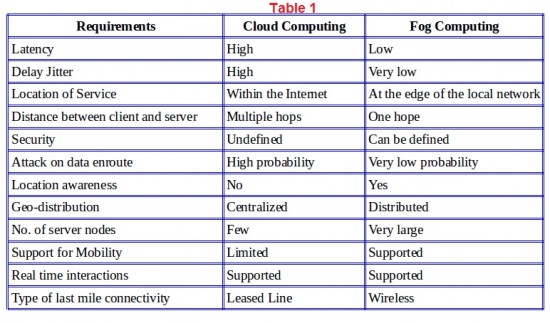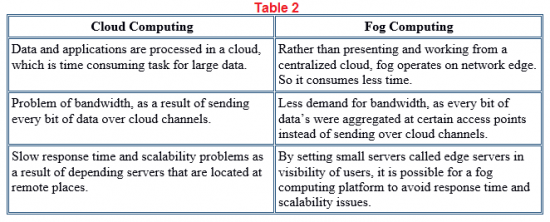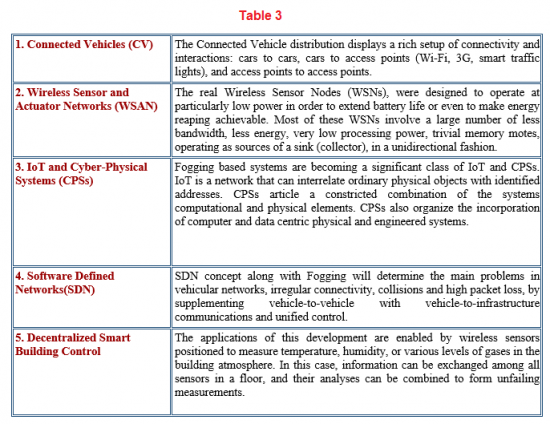Introduction
Nowadays, there are billions of devices connected to the Internet, and this has led to some advances in the Electronics and Telecommunication technology developments in recent years which resulted in various kinds of very powerful devices with communication and networking capabilities that have attracted the industries to adopt this technology into their daily business to increase their efficiency. Other than the industrial sector, there are other sectors like assisted living services, public services, etc., which have a big demand for Information and Communication Technology developments. Therefore, there is the need for a new paradigm in M2M communication which enables “Things” connectivity to the Global Internet Network. This paradigm is known by the term IoT.
IoT is the network of physical objects or “Things” embedded with electronics, SW, Sensors and connectivity to enable it to achieve value and service by exchanging data with the manufacturer, operator and/or other connected devices through advanced communication protocols without human operation. The technology of IoT has been evolved according to the environment based on information communication technology and social infrastructure, and we need to know the technological evolution of IoT in the future.
By connecting billions or even trillions of devices to the Internet, we realize that there are a lot of applications that are being used by the industries, the government, the public, etc. For example, the Intelligent Transport System (ITS) application which monitors the traffic in a city by wireless sensors or video surveillance, and sends the information to the users on their mobile devices with the help of the Global Positioning System (GPS) transceiver, to let the users avoid traffic jam and prevent accidents. This is only one application example out of a lot more examples like smart home and e-Health applications. Massive amounts of data are being generated by billions of connected devices and transferred throughout the network to the Internet.
Here come the benefits of integrating IoT with the cloud. One obvious benefit of this integration, is the flexibility the user gets in accessing the services that are offered by the cloud provider through a web interface. This also gives the flexibility to the M2M service provider to offer its services to more customers. So, what is Cloud Computing?
Cloud computing is usually a model for enabling convenient, on-demand network use of a shared pool of configurable computing resources (e.g., networks, servers, storage, applications, and services) that may be rapidly provisioned and released with minimal management effort or vendor interaction. It is a new computing technique which achieves options for renting of storage infrastructure and computing services, renting of business processes and overall applications. This new technique simplifies the clients computing jobs by renting resources and services.
Cloud systems are located within the Internet, which is a large heterogeneous network with numerous speeds, technologies, topologies and types with no central control. Because of the non-homogeneous and loosely controlled nature of the Internet, there are many issues especially quality of service related ones remain unresolved. One such issue that affects the quality of service severely is network latency. Real time applications with which users directly interact with are badly affected by delay and delay jitter caused by latency in networks.
The other major issue confronted with cloud computing is security and privacy. Since the cloud systems have been located with the Internet, user requests, data transmission and system responses need to traverse a large number of intermediate networks depending on the distance between the users and systems. When customer data is out there in a public cloud, there is a risk of them being compromised of their integrity and confidentiality. Deeper the data inside the Internet, higher the risk as the data has to travel a long distance to and from the user’s computer to the cloud system, even if the data is encrypted. Similarly the availability of the cloud systems can also be attacked using various methods. Thus it can be seen that cloud systems at present face various security threats due to very nature of their implementation within the Internet coupled with location independence.
Cloud computing model is an efficient method for holding and managing private data centers and it frees the enterprise and customers from the specifications of so many details which may create a problem for latency sensitive applications that require large numbers of nodes in order to meet the delay requirements. IoT requires mobility support and wide range of Geo-distribution in addition to location awareness and low latency features. Therefore, we needed a new platform to meet all these requirements. There is a new platform that delivers a new set of web applications and services to the end-users, by extending cloud platform. This new platform is called Fog Computing and also known as Fogging.
What is Fog Computing?
The term “Fog Computing” was introduced by the Cisco Systems as new model to ease wireless data transfer to distributed devices in the Internet of Things (IoT) network paradigm. Cisco defines Fog Computing as a paradigm that extends Cloud computing and services to the edge of the network. Similar to Cloud, Fog provides data, compute, storage, and application services to end-users. The distinguishing Fog characteristics are its proximity to end-users, its dense geographical distribution, and its support for mobility. Services are hosted at the network edge or even end devices such as set-top-boxes or access points. By doing so, Fog reduces service latency, and improves QoS, resulting in superior user-experience. Fog Computing supports emerging Internet of Everything (IoE) applications that demand real-time/predictable latency (industrial automation, transportation, networks of sensors and actuators). Thanks to its wide geographical distribution the Fog paradigm is well positioned for real time big data and real time analytics. Fog supports densely distributed data collection points, hence adding a fourth axis to the often mentioned Big Data dimensions (volume, variety, and velocity). (Read more http://cisco.re/1KUnXCX)
Why Fogging?
Fog model provides benefits in advertising, computing, entertainment and other applications, well positioned for data analytics and distributed data collection points. End services like, set-up-boxes and access points can be easily hosted using fogging. It improves QoS and reduces latency. The main task of fogging is positioning information near to the user at the network edge.
Fogging Advantages:
- The significant reduction in data movement across the network resulting in reduced congestion, cost and latency, elimination of bottlenecks resulting from centralized computing systems, improved security of encrypted data as it stays closer to the end user reducing exposure to hostile elements and improved scalability arising from virtualized systems.
- Eliminates the core computing environment, thereby reducing a major block and a point of failure.
- Improves the security, as data are encoded as it is moved towards the network edge.
- Edge Computing, in addition to providing sub-second response to end users, it also provides high levels of scalability, reliability and fault tolerance.
- Consumes less amount of band width.
Fogging Disadvantages:
Introduces certain demerits on the selections of technology platforms, web applications or other services.
Cloud Computing vs Fog Computing
From Table 1 and Table 2, it can be seen that Cloud Computing characteristics have very severe limitations with respect to quality of service demanded by real time applications requiring almost immediate action by the server.


Please check the following video, where Michael Enescu, CTO of Open Source Initiatives, Cisco discusses the shift from cloud to fog computing and the Internet of Things.
IoT Applications and Fog Computing
Check table 3, to find out the vital role of fogging in IoT

Conclusion
Fog computing performs better than cloud computing in meeting the demands of the emerging paradigms. But of course, it cannot totally replace cloud computing as it will still be preferred for high end batch processing jobs that are very common in the business world. Hence, we can come to the conclusion that fog computing and cloud computing will complement each other while having their own advantages and disadvantages. Edge computing plays a crucial role in Internet of Things (IoT). Studies related to security, confidentiality and system reliability in the fog computing platform is absolutely a topic for research and has to be discovered. Fog computing will grow in helping the emerging network paradigms that require faster processing with less delay and delay jitter, cloud computing would serve the business community meeting their high end computing demands lowering the cost based on a utility pricing model.

I advise to start with an airport. What could be easier, than to integrate “IoT” into the infrastructure of the Airport. The modern inventions aid us to use electronic tickets (e-tickets), due to the availability of electronic database with our Passport numbers, SSN ID… etc..
However, there is still a problem. A visual contact to identify the passengers, the direct contact to weigh the luggage, etc. But there are web cams, that could identify any passenger…, — one type of sense, weighing-machine – another tactile type of sense… scanners (to scan our documents on the border), other scanners (to scan our luggage) and so on.
Why don’t use their “sensitive opportunities” (that you call “IoT”) to avoid human labor in the airport and, furthermore, to reduce costs.
A lot of departments of our infrastructure are bureaucratic, thanks to underestimation of the technologies like “IoT.”
It’s already being tested. London City Airport is the first airport in the world to test how the Internet of Things.
this is information very important and useful.Thanks Mr Maher
Thanks a lot, Dima. Glad yo liked it
I found this article very useful ,Thanks for sharing
You’re welcome, Hosen!
מדהים כמו תמיד, אתה מדבר על דברים-שאני כבר ברוך השם- יודעת אותם
תודה רבה
to dah rah-bah, R.M
על לא דבר
It is a very important article Sr. Maher, well explained, summarized and precise. Total is what we need, especially caught my attention Fog Computing technology with IoT .. Thanks for your work and this great information, Te esperamos en nuevos artículos en español además del inglés
Un cordial saludo
You used a highly novel approach to reduce the consequences of a key problem related to net congestion and to avoid the bottlenecks.Then you precisely produced by your study a practical effective solution to the above mentioned problem.This study is really informative and very well designed.
Thanks a lot, Dr Loubana!. I’m really honored to have such a comment.
De nada, Rosa Blanca!.Voy a tratar 🙂
Thank you . As usual very interesting and useful article .
You’re always welcome, Kinda!
Thank you . As usual very interesting and useful article
Thanks, Rayan!
Thank you for this wonderful article.
Thanks, Ammar!
actually , a very interesting article , wish you keep giving us information and articles and be in-touch with us through website .
real thanks for your efforts
Of course, Rana. I will do my best.
i like this article
So happy you like it, Ayman. Thank you!
Bon courage et bonne continuation.
Merci bcp, Mouna!
שהקב”ה יאיר את דרכך וישלח לך פרנסה והצלחה בכל דרך בה תלך
Keeping up with all the terminology 🙂 Thanks for this post.
You’re welcome, Marco. Thanks for your comment!
جميل جدا
Thank you!